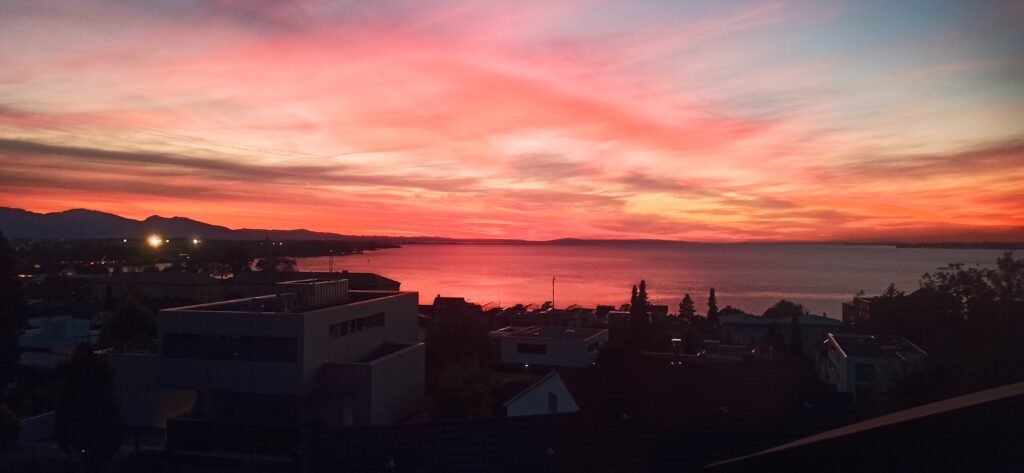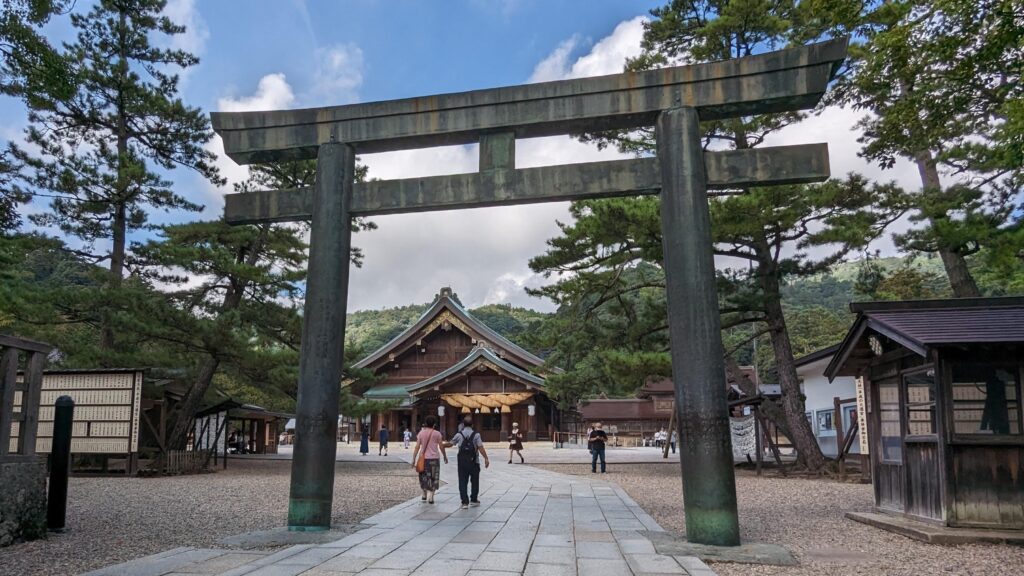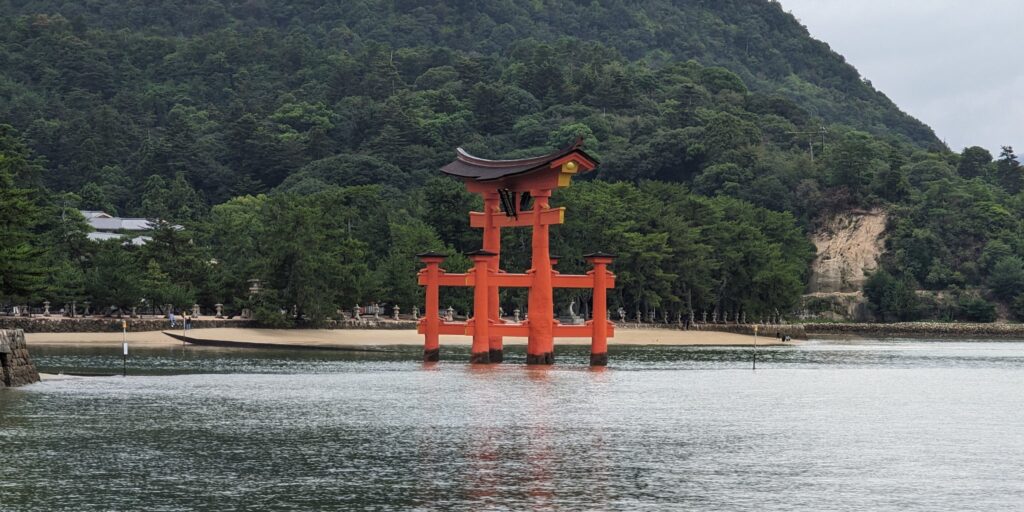Today I am writing about my long planned trip to Austria. And for those who do not know much of this Germanic country, here are some facts about this beautiful country.
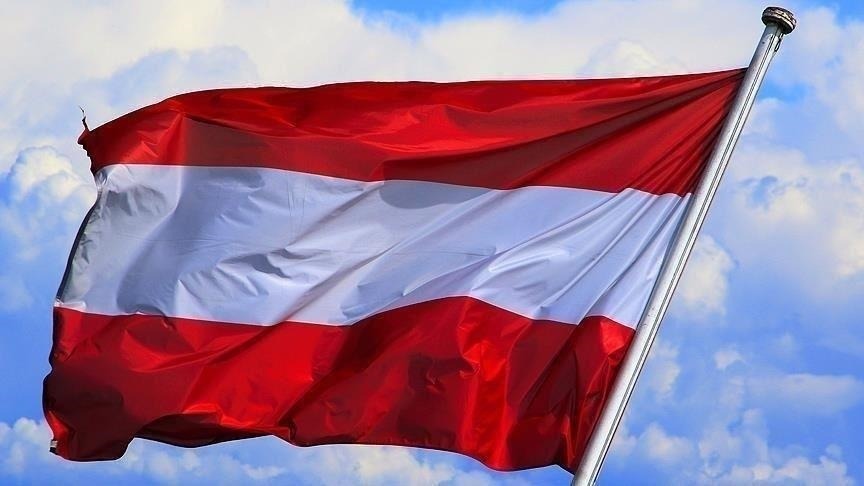
Austria is an Alpine country in the central part of Europe with the capital city of Vienna, which has a population of almost 2 million, which is almost as much as the population of Slovenia, the neighboring country with around 2,1 million people. In fact more than 20% of Austrians live in Vienna, with Austria having a population of about 9 million.
Austria borders many countries, them being Germany, Czech Republic, Slovakia, Hungary, Slovenia, Italy, Liechtenstein and Switzerland. In fact Bregenz, where I am staying, is very close to Germany, Switzerland and Liechtenstein, all of these countries being under and hour away with a car, and as such I will be visiting all of them (at the time of writing I have already visited Germany on my visit to Lindau, a German city on the island in Bodensee lake where I am staying).
In addition to that Austria is also a very rich country, constantly ranked in the top 20 richest countries in the world by GDP per capita. The country has also achieved a high standard of living and in 2018 has placed 20th in the world for its Human Development Index. Austria is also home to many well known companies such as OMV, Red Bull GmbH and many others.
But, to get back to the main theme of this post, Bregenz next to the Bodensee lake (Lake Constance). The lake is located at the west of Austria, bordering Austria, Switzerland and Germany. It is also the largest lake in Austria and one of the largest in Europe (excluding the northern countries with their huge lakes).
Day 1
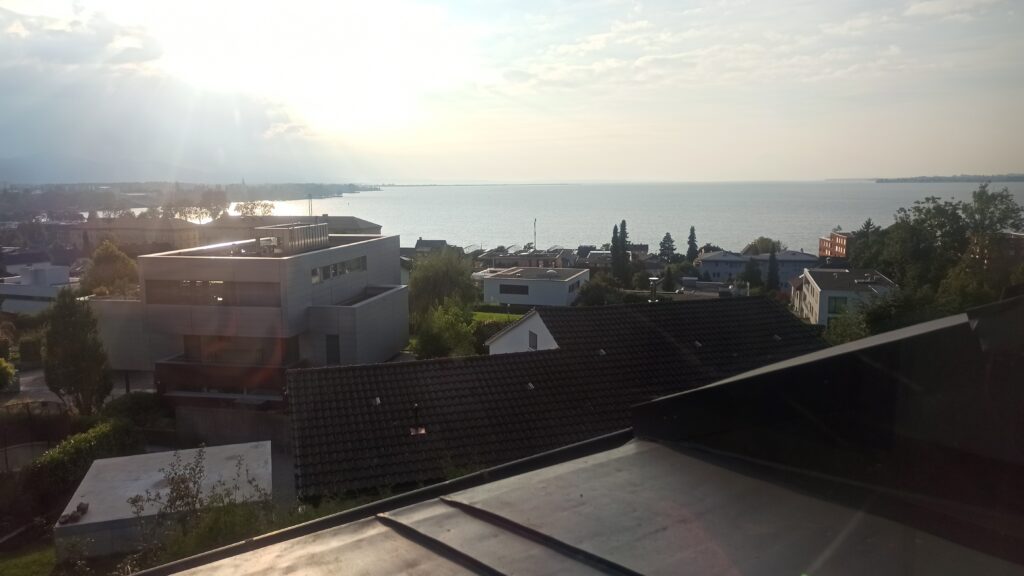
We arrived at our destination late in the afternoon with a car and settled in our apartment for that day. Since we were tired, we did not visit any places this day and instead went for a walk around the city and ate some pizza. The first impression of the city was really good, the city was peaceful, clean and it being next to the lake was a bonus point in my books, since living next to a lake allows you to swim, take a boat ride, as well as impacts the weather a lot. The city is also full of old buildings, villas and rich people with modern houses and luxurious villas, as well as this city being a place full of tourist. However, since we did not visit the city in the tourist season, it was not too crowded with tourists, which quite suits me (of course, the pandemic also plays a big role in the decrease of tourism). So in conclusion, the aim of the first day was just to get an impression of the city and its surroundings.
Day 2
We began the second day with a decision to visit the neighboring city of Lindau, which is located just over the border of Germany on an island connected with a bridge and an artificial sandbank, on which a railway is built. The city is known for being a popular tourist attraction in the south of Germany, famous for its gardens in the summer, as well as its unique architecture and outdoor attractions such as cycling, sailing, hiking swimming and camping.
We headed there with a car, parking at a P+R parking on the mainland and then continued to the island on foot- Passing the bridge I took a quick photo of the lake and the mentioned sandbank in the distance. The lake was full of swans and ducks, which accompanied us during our simple breakfast next to the lake.

After that we continued our trip to the island, wandering through the narrow streets surrounded with houses having a rich history behind them. So, our first destination in the city was the old town hall of Lindau, painted with “wet paintings”, which is quite common for old buildings of the rich. Next to it was also the Lindavia Fountain with a statue of Lindavia. Lindavia, the female embodiment of Lindau, is enthroned on her marble base with a crown suggesting the city wall and a rudder in her hand. The four bronze statues accompanying it represent the local trades: shipping, fishing, horticulture, viticulture and agriculture. The statue was built in 1877 by the sculptor Wilhelm Rumann and the architect Friedrich von Thiersch.
While observing the surroundings and the town hall, we also encountered a sight of a zeppelin flying across the sky, which is quite an uncommon occurrence in other countries.

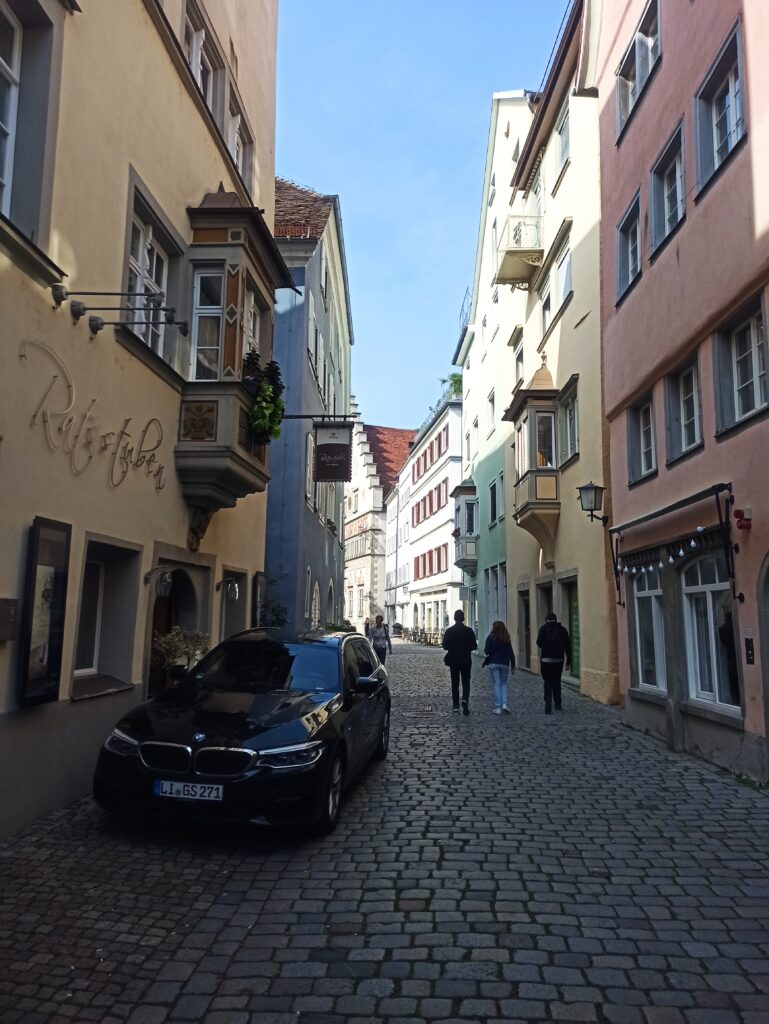

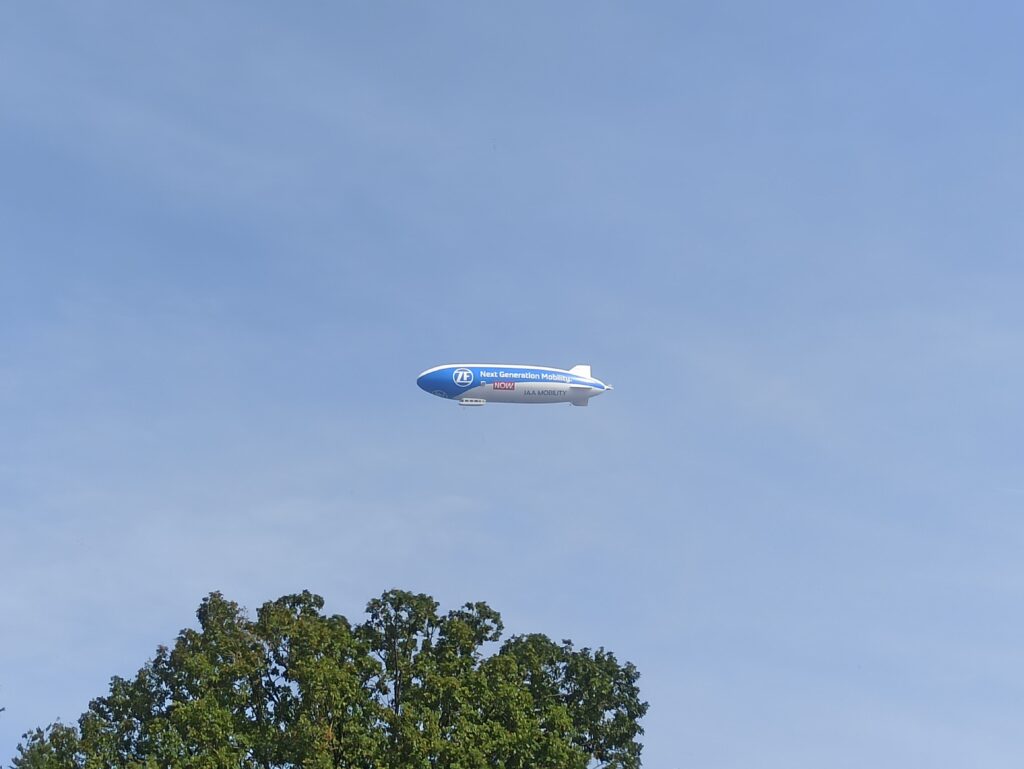
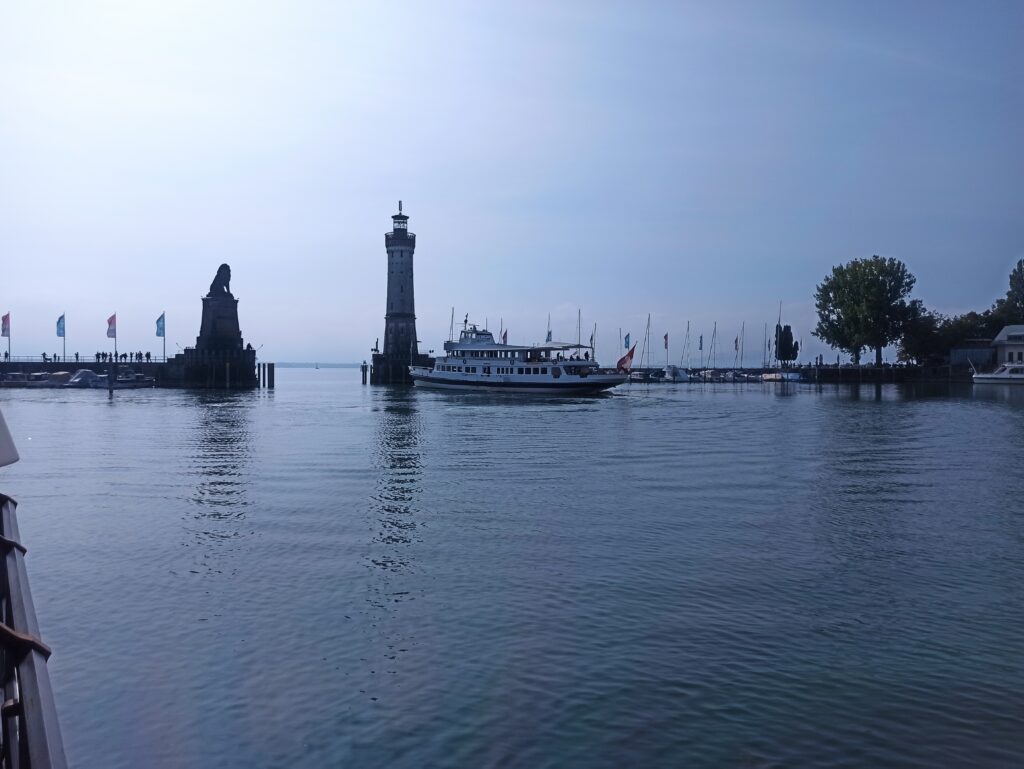

Following that, we headed to the island’s harbour, which has been historically a very important place for trade and fishing, dating back to the 19th century. Today however, it plays a big role in the tourism of Lindau, having many large boats that offer transport across the lake for the tourists to famous destinations such as Bregenz etc. The harbour is otherwise filled with expensive yachts and boats owned by mostly local residents. The harbour is also known for its interesting entrance: it having a lighthouse on one side and the Bavarian Lion sculpture on the other side. Standing next to the lion statues also revealed an interesting spot where people threw coins to bring them luck, so I tossed a coin as well and wished for a better weather in the following days.
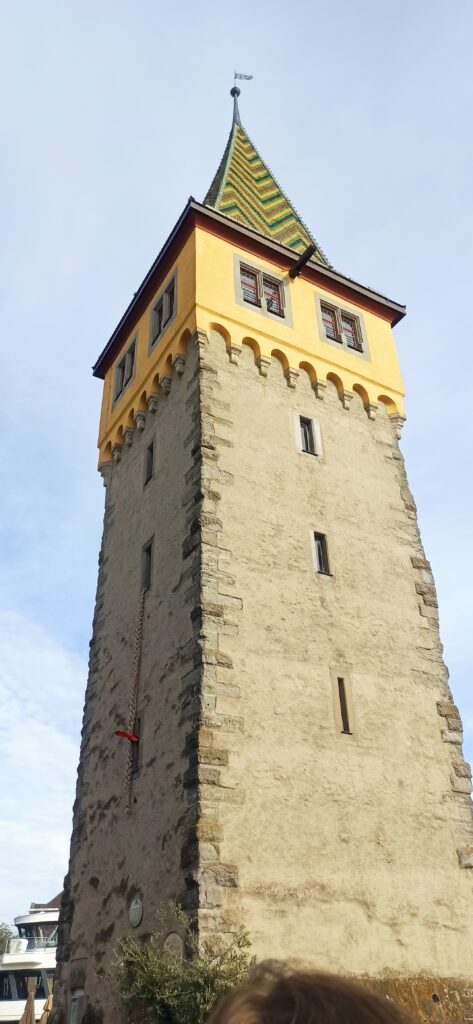
At the harbour a tower called Mangturm was built, which in the past served as a jail for people. Following that, some of us headed to see the rest of the city and others headed to an art museum, which had a lot of paintings on diaply.
We ended our day with a quick dinner of Asian food, that is noodles, yakitori (chicken meat – with soy sauce and teriyaki sauce marinade – grilled on a stick), as well as baozi (also bao) – a type of yeast-leavened filled bun in various Chinese cuisines. In the end, the evening has arrived and I managed to capture a photo of the beautiful red sky indicating the end of the day.
